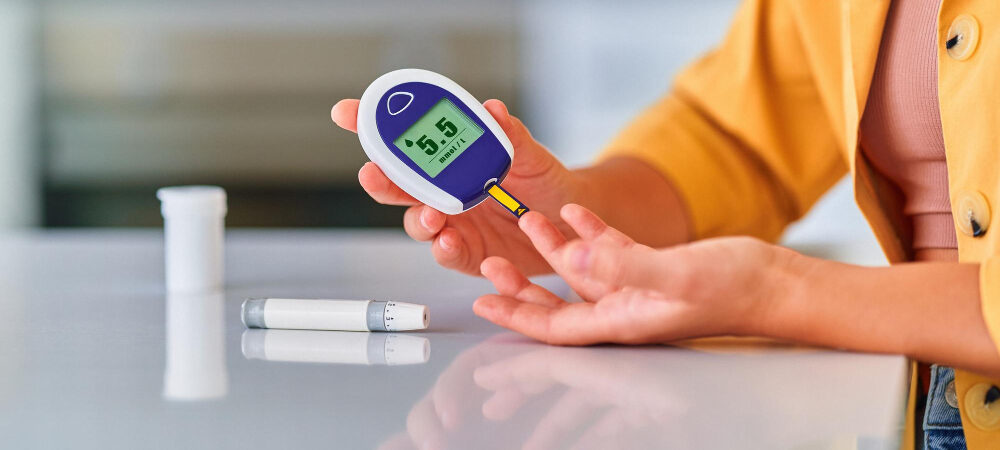Introduction:
Monitoring blood sugar levels is a crucial aspect of managing diabetes and maintaining overall health. Regular testing allows individuals to make informed decisions about their diet, medication, and lifestyle. Fortunately, advancements in medical technology have made it possible to test blood sugar at home with ease and accuracy.
In this guide, we will walk you through the step-by-step process of testing your blood sugar levels at home, the importance of monitoring, and the various tools available for accurate results.
Understanding Blood Sugar Levels
Blood sugar, or glucose, is the primary source of energy for our bodies. It comes from the foods we eat and is transported through the bloodstream to cells. However, abnormal blood sugar levels, particularly high levels, can lead to diabetes and other health complications. Regular monitoring helps individuals maintain their blood sugar within a healthy range.
Why Test Blood Sugar at Home?
Testing blood sugar at home offers several advantages, including convenience, immediate results, and the ability to make timely adjustments to diet and medication. It empowers individuals to take an active role in managing their health and prevents potential complications.
Tools for Home Blood Sugar Testing
To conduct a blood sugar test at home, you will need the following tools:
- Glucometers: These portable devices measure blood sugar levels based on a small blood sample.
- Test Strips: Used in conjunction with the glucometer, these strips come into contact with the blood sample and generate the reading.
- Lancets: These are tiny, sharp needles that are used to prick the fingertip to obtain the blood sample.
- Alcohol Swabs: Used to clean the testing site and prevent infection.
Preparing for the Test
Proper preparation ensures accurate results:
- Wash Hands Thoroughly: Clean hands with soap and water before testing.
- Gather Supplies: Ensure you have all the necessary tools within reach.
- Select a Testing Site: The fingertip is a common site for testing due to its rich blood supply.
Step-by-Step Guide to Testing Blood Sugar
Follow these steps for accurate testing:
- Inserting the Test Strip: Most glucometers require the insertion of a test strip before use.
- Pricking the Finger: Use a lancet to prick the fingertip gently.
- Applying Blood to the Test Strip: Place a drop of blood on the designated area of the test strip.
- Reading the Results: The glucometer will display your blood sugar reading.
Interpreting Blood Sugar Results
Understanding your blood sugar readings is essential:
- Target Ranges: Fasting and post-meal target ranges may vary. Consult your healthcare provider for guidance.
- What Do High and Low Readings Mean?: High readings could indicate hyperglycemia, while low readings might suggest hypoglycemia.
Tips for Accurate Testing
Follow these tips for precise results:
- Calibrate Your Glucometer: Regularly check and calibrate your glucometer per the manufacturer’s instructions.
- Store Test Strips Properly: Keep them in a cool, dry place to maintain accuracy.
- Maintain Hygiene: Always clean the testing site and your hands before testing.
- Keep a Testing Log: Maintain a record of your readings to track patterns and share them with your healthcare provider.
When and How Often to Test
The frequency of testing depends on individual circumstances. Discuss with your doctor to determine the appropriate schedule.
Benefits of Home Blood Sugar Testing
Home testing offers numerous benefits, such as early detection of fluctuations, personalized management, and reduced healthcare costs.
Conclusion
Testing blood sugar at home empowers individuals to actively manage their health and make informed decisions. By following the steps outlined in this guide, you can ensure accurate results and take control of your diabetes management journey. Regular monitoring, combined with proper medical guidance, will contribute to a healthier and more fulfilling life.
Remember, knowledge is the key to effective diabetes management, and home blood sugar testing puts that knowledge at your fingertips.
Other Healthcare Articles:
The Role of Nutrition in Diabetes Management
Personalized Dietary Counseling for Diabetes
“Humalog vs Novolog”, for Effective Blood Sugar Control, A Comprehensive Comparison
Understanding the Link Between Diabetes and Dry Eyes
Is Diabetes Contagious? Debunk the Myth
Exploring the Link Between Moldy Toilets and Diabetes: Fact or Fiction?
Normal Blood Sugar Levels Chart By Age: Understanding Optimal Health
Disclaimer:
Medical Advice: The information provided in this blog post is for educational purposes only and should not be considered as a substitute for professional medical advice, diagnosis, or treatment. Always consult with a qualified healthcare professional for personalized guidance regarding your specific medical condition.
Accuracy of Information: While we strive to provide accurate and up-to-date information, the field of medicine and viral fevers is constantly evolving. The content in this blog post may not reflect the most current research or medical guidelines. Therefore, it is advisable to cross-check any information provided with reliable sources or consult a healthcare professional.
Individual Variations: The symptoms, causes, treatment options, and preventive measures discussed in this blog post are general in nature and may not apply to everyone. It is important to remember that each individual’s situation is unique, and personalized medical advice should be sought when making healthcare decisions.
External Links: This blog post may contain links to external websites or resources for additional information. However, we do not endorse or have control over the content of these third-party websites. Accessing these links is done at your own risk, and we are not responsible for any consequences or damages that may arise from visiting these external sources.
Results May Vary: The effectiveness of treatment options or preventive measures mentioned in this blog post may vary from person to person. What works for one individual may not work the same way for another. It is essential to consult with a healthcare professional for personalized advice tailored to your specific needs.

Chief Consultant Diabetologist & Preventive Cardiologist, Consultant Functional and Lifestyle Medicine, Geriatrician & Family Medicine Specialist, Nutritionist, Life Counsellor and Wellness Coach, Motivational Speaker & Columnist, NLP Practitioner and Hypnotherapist, Bach flower Therapist


